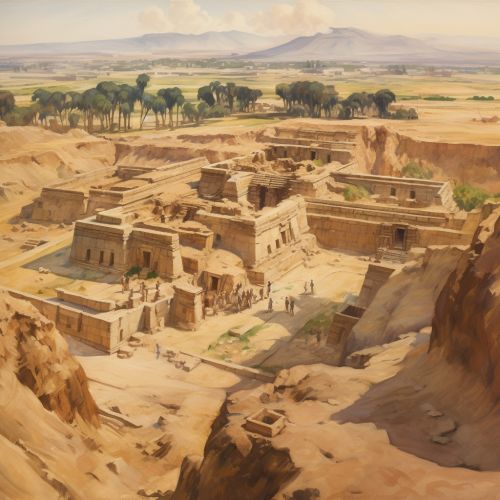Indus Valley Civilization
Introduction
The Indus Valley Civilization (IVC), also known as the Harappan Civilization, was a Bronze Age civilization that existed in the northwestern regions of South Asia from approximately 3300 BCE to 1300 BCE. It was one of the three early cradles of civilizations of the Old World, along with Ancient Egypt and Mesopotamia.


Geography and Sites
The civilization's core region extended from northeast Afghanistan, through much of Pakistan, and into western and northwestern India. It encompassed an area of about 1.25 million km², making it the largest ancient civilization. The civilization is noted for its cities built of brick, roadside drainage system, and multistoried houses.
The major urban sites of the Indus Valley Civilization include Harappa, Mohenjo-daro, Dholavira, and Rakhigarhi. The civilization was first identified in 1921 at Harappa in the Punjab region and then in 1922 at Mohenjo-daro in Sindh.
Culture and Economy
The Indus Valley Civilization had a highly developed urban culture. It was characterized by a well-planned grid system of cities, advanced architecture, sophisticated arts and crafts, and a precise system of measurement. The economy of the civilization was based on agriculture, supplemented by trade.
The people of the Indus Valley showcased a high degree of technological and craft specialization. They were skilled in various crafts, including pottery, metallurgy, and bead-making. The civilization is also noted for its seals, which provide evidence of a high degree of craft specialization.
Society and Religion
The Indus Valley Civilization had a complex social structure. The society appears to have been largely peaceful, with little evidence of conflict or warfare. The civilization was likely divided into various social groups, although the exact nature of this division is not well understood.
Religion played a significant role in the civilization. The people of the Indus Valley are believed to have practiced a religion that involved ritual bathing, a concept of purity, and the worship of numerous deities, especially a mother goddess.
Decline and Legacy
The Indus Valley Civilization started to decline around 1900 BCE. The reasons for this decline are not fully understood, but theories include climate change, overpopulation, and invasion or internal conflict.
Despite its decline, the Indus Valley Civilization left a lasting legacy. Its influence can be seen in the social, religious, and artistic practices of South Asia. Moreover, it laid the groundwork for the subsequent development of Indian civilization.
